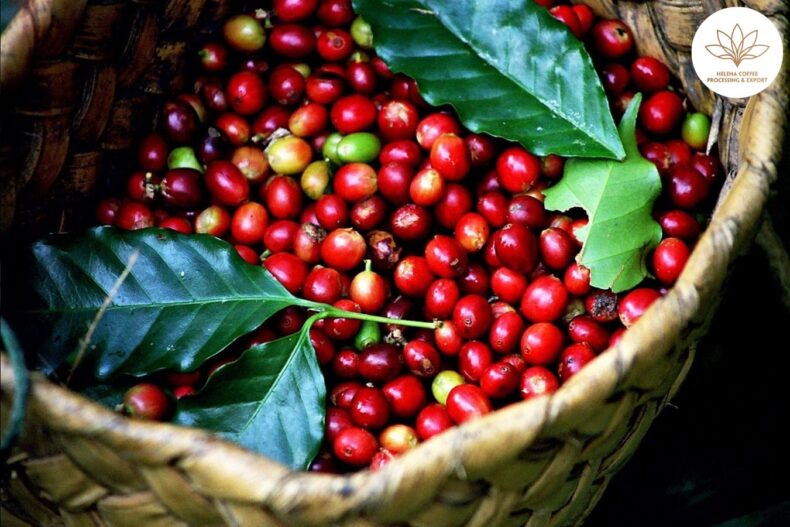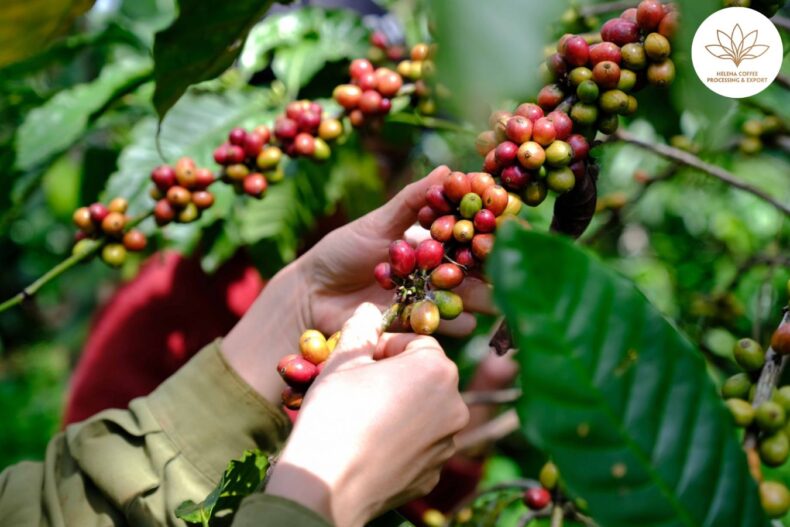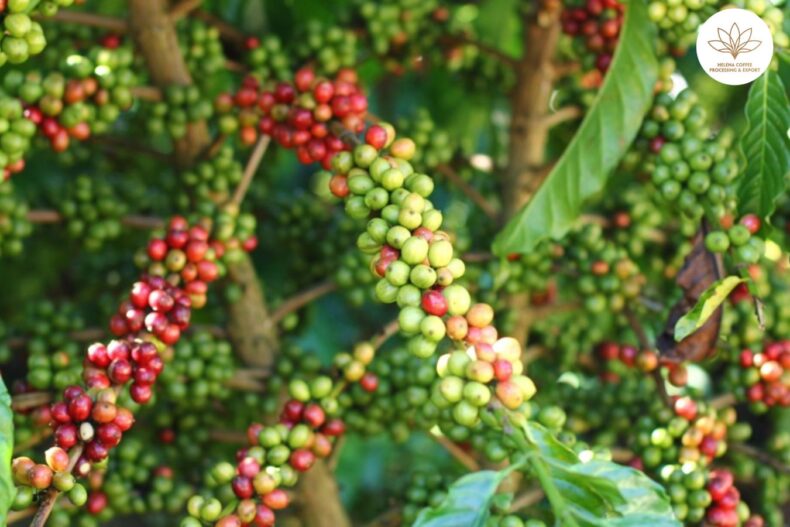
Enhancing Sustainability: How Increases in Coffee Prices Affect Cooperatives: From early 2021 to mid-2022, coffee prices rose steadily, with Arabica futures hitting a ten-year high of US$258.95 cents per pound in February 2022.
This is attributed to several reasons, including weather (such as a sudden freeze that affected some of Brazil’s main coffee-producing regions in July 2021 ), the rising price of shipping containers, and that the International Coffee Organization to halve its 2020/21 global coffee surplus to a 22-year low in early 2022.
Recently, the world coffee market price (also known as the C price ) has fallen to US$174.20 cents per pound, the lowest price in 18 months. Taking into account these important price fluctuations, an important question arises: do producers make more money when price C increases? For those who are members of cooperatives, can higher prices help them have more access to resources and different markets?
To find out, I spoke with three coffee industry professionals. Read on for their thoughts on how rising coffee prices are affecting cooperatives.
How do coffee cooperatives work?
Before we look at the ways price increases affect cooperatives, we need to understand how these groups work.
At its core, a coffee cooperative is a group of producers who come together to collectively improve their access to a range of resources , including fertilizers, agricultural tools, seeds, and credit loans. Additionally, farmers can access formal training programs and take advantage of better business and marketing opportunities, ultimately increasing their potential to receive more profits for their coffee.
One of the industry experts I spoke to (who wishes to remain anonymous) says that cooperatives provide producers with a number of benefits, such as “[supporting] them in buying and selling coffee.”
In simple terms, cooperatives operate similarly to nonprofit organizations. To join a cooperative, producers must pay a fee. This money is reinvested in the community under the premise that the combined funds will have more impact than those of an individual producer.
By becoming a member of a cooperative, a producer is likely to have greater access to a variety of services and resources.
Some cooperatives even buy coffee from their members and distribute it to other buyers. This can be very beneficial for producers because it gives them access to different markets that they may not have been able to enter on their own.
Another coffee professional I spoke with, who also wishes to remain anonymous, explains that cooperatives can provide producers with more stability in the face of inflation and market volatility. For example, farmers can purchase fertilizers at reduced prices, ensuring better access to much-needed resources and allowing them to reinvest the money saved into their farms.
How do fluctuations and increases in coffee prices affect cooperatives?
Although there are several benefits to joining a cooperative, the cooperative model is not without its problems.
In Kenya, for example, up to 50% of the country’s coffee farmers have worked with large estate groups or cooperatives at some point. This took a turn during the last decades and is reflected in a constant decrease in the number of cooperative members. The change is largely attributed to low coffee prices and farmers’ claims of a lack of autonomy and reasonable decision-making.
Additionally, recent market volatility raises questions about how profitable cooperatives are.
“Coffee farming is a risky business for several reasons” says one industry expert. “In a very volatile market. The goal is to reduce risk as much as possible and cooperatives can help farmers achieve this.”
He adds that by becoming members of a cooperative, producers are more likely to be able to better understand their potential profits and losses by predicting their input costs.
The industry expert uses forward purchasing as an example. In theory, this model allows cooperative members to sell their coffee at the current price with an obligation to deliver it at a future date.
For the producer, this can help mitigate the risks of future market volatility by ensuring that they will receive a high enough price for their coffee. Despite the advantages, if the price of coffee increases a few months later, the farmer will lose money in real terms.
During 2021 and 2022, we saw some producers who had agreed to sell coffee at lower prices abandon their agreements to try to obtain a higher price in the market. This is known as strategic default .
Although there are some benefits, strategic noncompliance can have negative consequences. For example, producers could end up blacklisted by cooperatives, traders or roasters.
“In Brazil, where farms are typically larger than in other countries, some producers sell up to 80% of their harvest and keep the remaining 20% to protect themselves from market fluctuations,” explains one expert. “Meanwhile, in Colombia, which has a greater number of small coffee growers, producers sell all their coffee.”
In this case, cooperative members in Colombia are less protected against market fluctuations, exposing them to greater risk. This is very worrying if you consider that the National Federation of Coffee Growers of Colombia (FNC) buys around a third of the country’s coffee, which means that a large part of the members of Colombian cooperatives could receive lower prices.
Kyle Bellinger is the CEO and founder of Osito Coffee , which operates in Colombia, the United Kingdom, and the United States. He explains that coffee market price regulation works differently in African countries, resulting in slightly different market volatility.
“In Ethiopia and Burundi, for example, the price of coffee is set by the government on a monthly or weekly basis, so it does not change daily like in Colombia and Brazil.” he says.
He adds that since most farmers in countries like Burundi, Kenya and Ethiopia do not do post-harvest processing, they are also less vulnerable to market fluctuations. In this case, by doing minimal post-harvest processing, they often receive lower prices for their coffee.
Is there a risk of business bankruptcy?
Given the recent increase in contract breaches, one question that comes up in the conversation is whether cooperatives are at risk of running out of money.
An industry expert comments that Colombia experienced this in mid-2022. Of 38 cooperatives in Colombia, four are in the process of liquidation . In addition, several are under the supervision of the Superintendence of Solidarity Economy, the body that regulates cooperatives, banks and financial institutions in the country.
In Colombia, cooperatives must report their profits and losses to the regulatory body; if their monthly statements are negative, an investigation will be initiated. Once a cooperative is investigated, it becomes under the control of the Superintendency.
One industry expert says this often involves appointing someone with little coffee experience to run the cooperative. He adds that this may lead to the dissolution of the cooperative as the appointed officer may not have sufficient knowledge to support its operations.
What can be done to support cooperatives?
There is no doubt that the dissolution of cooperatives in any coffee-growing country would have detrimental effects on producers and, especially, on their members. This action can create a huge barrier to market access.
One industry expert says that while price insurance can help protect farmers from market volatility, it requires paying an upfront fee.
“Farmers don’t want to pay the fee and some couldn’t afford it.” he explains. “Cooperatives cannot force producers to pay the insurance fee, otherwise they could lose members.”
Ultimately, producers who are members of cooperatives only receive payments for their coffee once they have fulfilled their contracts. In this case, they may put themselves in a situation of economic vulnerability by receiving lower prices or waiting longer to receive payment.
Alternative financing models, such as bartering, can allow farmers to receive the goods and services they need without exchanging money. Coffee farmers typically deliver their coffee on an agreed upon date, allowing them to use their product as a bargaining tool to gain access to the resources they need to invest in their farms .
Speaking specifically about Latin American cooperatives, Kyle comments that establishing more centralized processing stations could allow farmers to focus more on growing and harvesting coffee and leave further processing to other stakeholders in the supply chain. In theory, this could improve the quality of the coffee and help increase prices.
“Also, it’s about the relationship between the producer and the roaster.” adds Kyle. “This often means paying a premium well above the C price when purchasing coffee.”
Despite the recent drop in coffee prices, it is still unclear how coffee cooperatives and their members will be affected by long-term price fluctuations.
In this case, what can be assured is that to create a truly sustainable coffee industry, transparency and price stability are essential. Without stability over a long period, price increases and market fluctuations can be detrimental and have unforeseen consequences.
FAQs:


